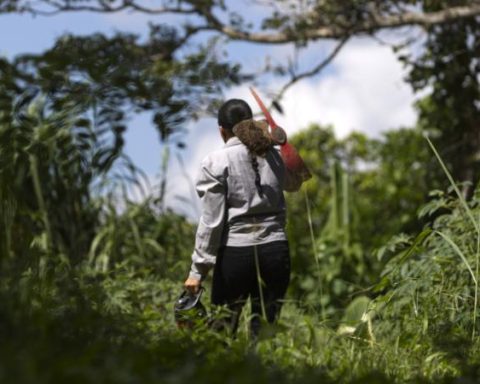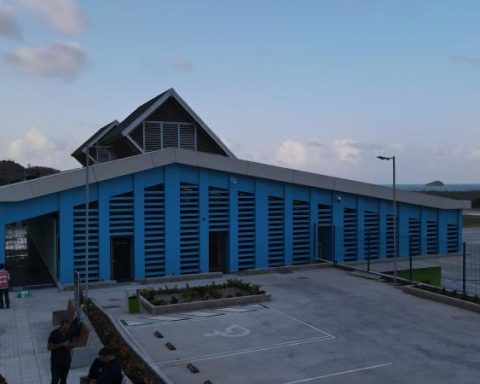In the first months of the year 2022, the main economies of Latin America continued to record significant growth rates in the search to rediscover stability after the passage of the covid-19 pandemic.
(See: Economy and insecurity mark Lasso’s first year in Ecuador).
However, beyond various internal variables that each of the countries has, exogenous stresses, such as the war in Ukraine or a spike in inflation, are leading these economies to a slowdown.
“Economic activity at the start of the year did show us a bit of a slowdown in the vast majority of Latin American economies”, said Munir Jalil, BTG Pactual chief economist for the Andean region.
According to Jalil, the engine of the reactivation registered last year in the region was consumption and the reasons behind it, which varied according to the country. In the case of Chili it was about putting into circulation the withdrawal of pension savings and from the Colombian point of view it was about saving income.
“In both cases, for this 2022, that money somehow had to be finished (…) We have already begun to see it in the countries”, pointed Jalil.
On the other hand, Sergio Taborda, international economist at Banco de Bogotá’s Economic Research, pointed out that this slowdown occurs gradually in the world and is due to multiple factors.
“On the one hand, the growth rates in 2021 were relatively high due to the base effect, which is due to a low comparison base due to the contraction of GDP in 2020 (…) Additionally, there are some logistical factors such as the higher freight costs and congestion in some major ports, which can be associated with the quarantines in China and the invasion between Russia and UkraineTaborda said.
(See: Bogotá is 81 in the Global Index of Financial Centers).
The first sign of this trend is recorded in Brazil. The most important economy in Latin America has had a subdued start to the year, at least as far as is known so far.
According to the IBC-Br economic activity index, which anticipates the publication of the gross domestic product, it marked a tepid growth of 0.34% in February 2020, which is below the 0.5% expected by investors. experts.
retail sales and production they removed the caste in this second month of the year, while the service sector was indebted to the forecasts.
Likewise, the Central Bank of the Amazonian country revised the fall in economic activity in January, passing it from 0.99% to 0.73%.
So far there are no more advances on the macroeconomic figures for Brazil. The March data was going to be announced on May 16, but was canceled due to a civil servant strike.
(See: The four future scenarios of globalization, according to the WEF).
On the other hand, the second largest economy in the region, Mexico, Nor does it escape this regional reality of economic slowdown.
According to data from the National Institute of Statistics and Geography (Inegi), the Mexican economy had a slight rebound of 1% in the period between January and March 2021.
Thus, the economy of ‘Aztec’ country joins two periods in a row registering a positive trend.
It is worth noting that, on a monthly basis, Mexico registered timid progress in its economy, where, to highlight, in February, there was a slight contraction.
“At first glance, the economy’s performance in Q1 looks encouraging, but GDP remains around 2.5% below its pre-Covid peak, and we think growth will be slow in the coming quarters”, said Andrés Abadía, Pantheon Macroeconomist chief economist for Latin America.
In the case of the Chilean economy, it rebounded by 7.2%, leveraged mainly by trade and personal, transportation and business services, according to information from the central bank of that country.
This result, which was below the expected rise of 7.9%, confirms a considerable drop from the 12% that GDP grew in the last quarter of last year.
(See: Exemptions, income and VAT: points to review for a new tax).
Refering to peruvian Economy, which grew 3.84% between the period from January to March, due to the good performance of production in the vast majority of subsectors, highlighted the National Institute of Statistics and Informatics (INEI).
“Countries such as Chile, Costa Rica and Colombia slowed down in the first quarter, going from growth rates of 12.0%, 9.2% and 10.8% in 4Q21 to rates of 7.2%, 6.0% and 8.5% in 1Q22Taborda said.
Although the giant of the southern cone, Argentina, has not yet revealed its figure for the first quarter (it will be known in June, like Brazil), the Monthly Estimator of Economic Activity (EMEA) has had upturns in those greater than 5% between January and March, which everything seems to indicate that the country will have a good behavior in the period. Something that they already take for granted in the government.
For Venezuela, In a case where the central bank does not reveal the country’s official figures, the Venezuelan Finance Observatory (OVF) pointed out that the country’s GDP grew 7.8% in the first three months, driven by the rebound in oil activity, with very low 2021 base effects.
(See: Fiscal situation, another risk that awaits the Colombian economy).
THE CHALLENGES OF THE REGION
Both analysts agree that part of the challenges of the region will be to contain the inflationary spiral.
“Some economies would be relatively more vulnerable in this situation, such as Argentina and Brazil”, said Sergio Taborda, from Banco de Bogotá.
For Munir Jalil, from BTG Pactual, there are two factors that make the region “have how to answer”, as are the ahigh commodity prices and the previous rise in interest rates.
ROBERTO CASAS LUGO
Journalist Portfolio


















